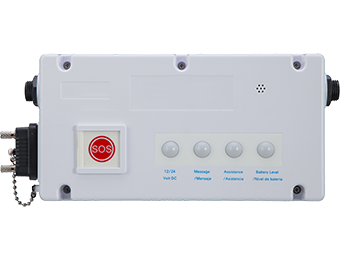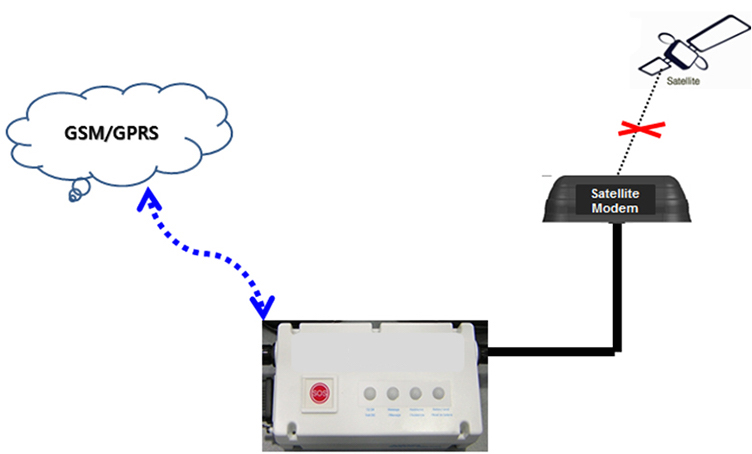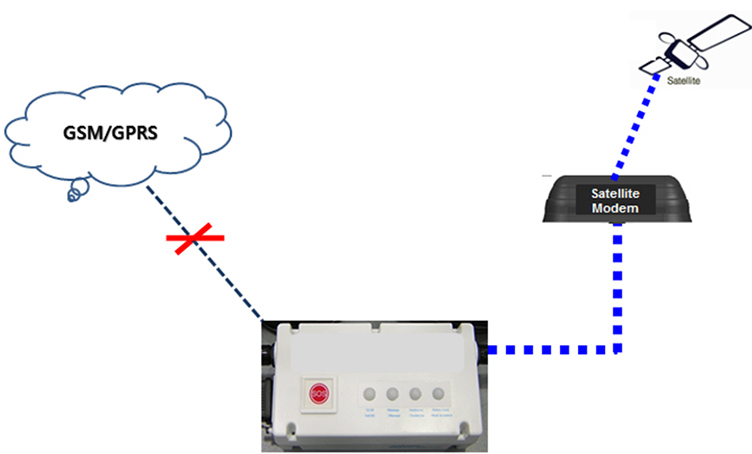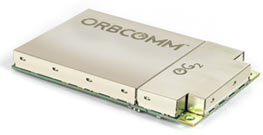Satellite hybrid solution integrates satellite, GSM and GPS modules.
STG H680
Satellite-GSM-GPS Hybrid Tracking Unit functions as a continuous remote management device of fixed and mobile assets anywhere across the world. The STG H680 communicates with its server via the GSM/GPRS network or using a satellite modem when the GSM/GPRS network is unavailable.
The STG H680 unit stays in active GSM/GPRS communication when it is in range of cellular coverage. Satellite communication with its server is automatically activated whenever the STG H680 tracker is not in range of GSM/GPRS coverage.
Once an asset (e.g. boat, vessel, vehicle, etc.) is equipped with the STG H680 Satellite-GSM-GPS hybrid tracking unit, users can monitor and manage the asset using messages and location data provided by the LEO satellite modem integrated module covering all terrestrial and aquatic areas (e.g. oceans, lakes, remote mining sites) of the world.
The STG H680 dual communication function is illustrated as below.
Figure 1. Communication flow when GSM/GPRS network is available for STG H680
Figure 2. Communication flow when GSM/GPRS network is NOT available for STG H680
Key Features
- Continuous real-time tracking in areas without cellular coverage
- Lower communication costs compared to using only satellite transmission
- An ideal hybrid (Satellite-GSM-GPS) tracker for boats (at sea, lakes) and mining / construction sites
| Receiver Type | 56 channel GPS&QZSS L1 C/A, Galileo E1B/L1, Glonass ready, Beidou ready SBAS : WAAS, EGNOS, MASA |
||
|---|---|---|---|
| Update Rate | 10Hz | ||
| Accuracy *1) | Position | 2.5m CEP | |
| SBAS | 2.0m CEP | ||
| Acquisition *2) | Cold starts | 29s | |
| 12s (Assist Autonomous) | |||
| Aided start | < 1s | ||
| Hot start | < 1s | ||
| Sensitivity *3) | Tracking | -162dBm | |
| Reacquisition | -160dBm | ||
| Cold start | -148dBm | ||
|
|||
| Frequency & Sensitivity | GSM 850 / 900MHz | -104dBm |
|---|---|---|
| DCS1800 / PCS1900Mhz | -102dBm | |
| GPRS | Multi-slot Class 12 | |
| Support all 4 coding schemes (CS-1, CS-2, CS-3 and CS-4) | ||
| Housing Dimensions | 202(W) x 106(L) x 67(T) mm | |
|---|---|---|
| Weight | 950g (w/o cables) | |
| Certificates (GSM/GPRS Modem) | CE, FCC, RoHS, PTCRB, ANATEL | |
| Operating Temperature | -30 ~ +80℃ | |
| Power Supply | DC 8V ~ 33V *Main power +/- inversion protection | |
| Electric Protection | Protection against ESD and overvoltage | |
| Back-up Battery | Rechargeable 11.4V, Ni-ion 7800mAh | |
| Antenna Type | Internal GPS antenna, Internal GPRS antenna | |
| Motion detection | Built-in 3-axis accelerometer | |
| Data storage | 2000 locations for lost coverage scenario | |
| Communications | TCP/UDP | |
| Setting mode | by USB cable or GPRS or SMS | |
| Firmware upgradable remotely (OTA: Over-The-Air) | ||
| Power consumption | Active mode | 70~80 mA@12V |
| Typical (3 min. reporting) | 40~50 mA @12V | |
| Event Inputs & outputs | 1 Input dedicated for ignition, and, 1 Input for general purposes 1 ADC 1 Output, Open drain output of upto 300mA for siren, vehicle blocking 1x RS232 |
|




